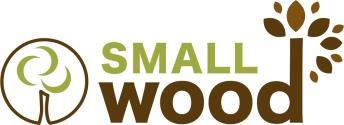Small Diameter Wood Utilization With Innovative Stand Management for Multifunctional Forests and a Growing Sustainable Bio-economy
Trees from Small Diameter Stands (SDS) are a large underutilized forest resource in most European countries, with a strong potential in contributing to building up a sustainable forest-based bio-economy.
The most common management of SDS is to date dominated by pre-commercial thinning, which primarily creates cost but no income because the felled trees are left on the ground. The main reason why the SDS potential in Europe is largely unexploited is the low harvesting productivity and high operating costs, together with a low current market price for small diameter wood. Even though there are some commercial products designed for multi-tree harvesting of small trees, as well as combined harvesting and chipping of small trees on the market, research clearly shows that there is a strong need for the development of these techniques, as well as for the associated work methods and procurement systems, in order to provide a feasible production chain. If more efficient harvesting techniques and systems could be developed, the potential SDS volume to harvest would lie in the range of 20-30 million m3 per year only in Sweden and Finland.
Overall objective
To develop and evaluate new technologies and new business and operational models that can support a sustainable management and utilization of different types of small diameter wood.
The hypothesis are that Small Diameter Stand (SDS) management and the studied techniques have an interesting innovation potential in terms of economy, social acceptance, sustainability, SME business opportunities and rural development especially if identified bottlenecks are solved.
The project focuses on four stand types
- Conventional thinning stands with small-diameter trees.
- Traditional coppice stands.
- Areas for forest fire prevention with small trees or bushes.
- Linear cleaning areas like roadsides, power line corridors, and strips just outside agricultural farm land.
Project long-term objectives are
- Improve the techniques and work methods up to the level where a profitable business can be built on SDS management and utilization.
- Develop strategies for SDS management that is sustainable, with a positive environmental profile, and long-term added values for a number of actors in the society.
Technology
Two types of technologies will be studied and further developed:
- Multi-tree harvesting technique combined with the working method “Boom corridor Thinning”
- Combined harvesting and chipping technique
